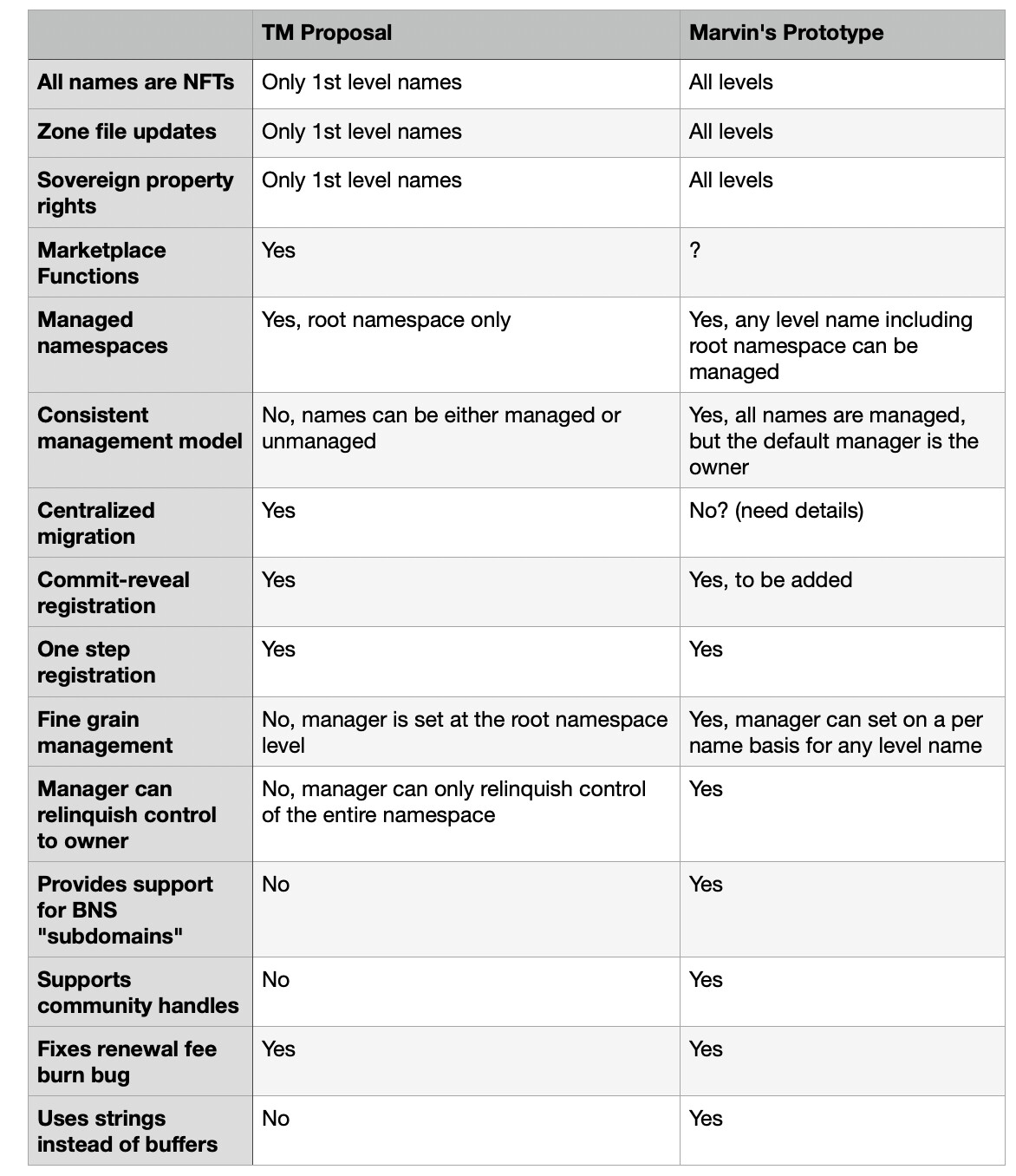Hey everyone,
I wanted to share a new prototype for a next-generation name system. The proposal is based my experience with .btc and my years in the ecosystem. The idea was first formulated when I was working on Clarity Lab but never saw the light of day.
My prototype takes a crypto-first approach when compared to the traditional ones modelled after DNS or “blockchain name system” approaches.
Instead of a one-level name system like BNS or DNS where the only second-level names (below TLDs) like example.com or marvin.btc are registrable and tradable, it is a multi-level, recursive NFT name system where each NFT is a name that can have zero or more sub names. It has the following properties:
- All names are SIP009 compliant NFTs.
- Each name has an owner.
- Each name has a manager (can be same as owner).
- Owners can change name properties like the zone file.
- Owners can transfer and trade names like any other NFT.
- Managers can register sub-names and change token URI and so on.
- Managers can transfer management to another manager or relinquish it to the owner of the name.
- Managers can freeze the manager setting to ensure management stability.
- Sub-names themselves are names, so all the above applies.
You can check out the concept code on my Github and try it out locally on your computer:
It’s important to note that this isn’t a ready-to-ship BNS upgrade (or anything like that), but instead a functioning prototype to show how the core concept works. There’s additional work that needs to be done to make this production ready along with decisions that would need to be made regarding what the upgrade path to this would be.
I’m very interested to hear your thoughts and feedback about my approach. Is it something that interests you? Is this a path that would make sense for a name system on Stacks? And finally, would you be willing to help?
